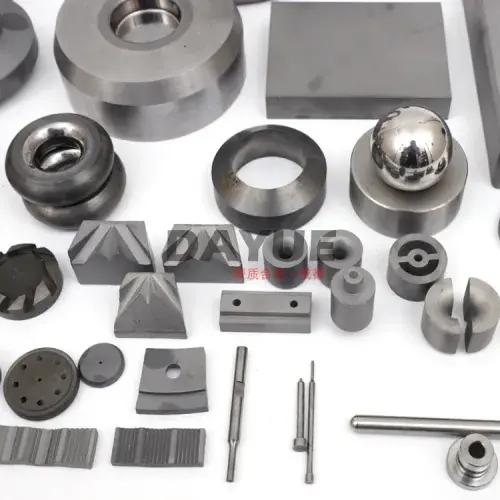
Privacy statement: Your privacy is very important to Us. Our company promises not to disclose your personal information to any external company with out your explicit permission.
Tungsten carbide is a hard and dense material that is widely used in various industrial applications, from drill bits and cutting tools to armor-piercing ammunition and jewelry. It is a compound consisting of tungsten (W) and carbon (C), with the chemical formula WC. The production of Tungsten Carbide Components involves several steps, including powder synthesis, sintering, and machining.

The synthesis of tungsten carbide involves several steps, including the preparation of tungsten powder, the mixing of tungsten and carbon powders, and the sintering of the mixture at high temperatures. The tungsten powder is typically produced through a reduction process, in which tungsten oxide is reacted with hydrogen gas or carbon monoxide to form pure tungsten powder. The tungsten and carbon powders are then mixed in a ball mill or attritor to form a homogeneous mixture. The mixture is then compacted at high pressure, typically in a hydraulic press, to form a green compact. The green compact is then sintered at temperatures of 1400 to 2000°C in a vacuum or controlled atmosphere to form the final tungsten carbide product.

Previous: What Is Cnc Mill Used For?

Privacy statement: Your privacy is very important to Us. Our company promises not to disclose your personal information to any external company with out your explicit permission.

Fill in more information so that we can get in touch with you faster
Privacy statement: Your privacy is very important to Us. Our company promises not to disclose your personal information to any external company with out your explicit permission.